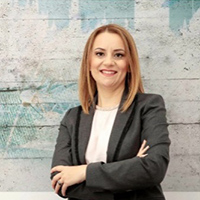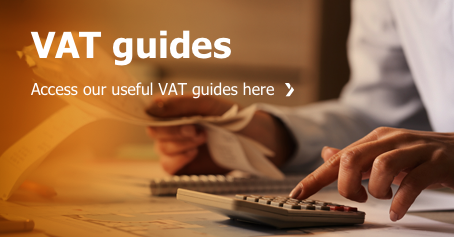Serbia VAT Guide

Dragana Galić
Serbia VAT specialist
This guide is an overview of Serbia’s Value Added Tax (“VAT”) system, focussed on how it affects foreign businesses trading with Serbia. It is general in nature and unlikely to cover the specifics of your scenario. It should be read as such and not be construed as advice. For advice as to how your business is affected by Serbia VAT please contact a Kreston Global Serbia VAT specialist.
- What is the tax called?
- What is the tax authority?
- What type of tax is it?
- What is it due on?
- What are the VAT rates?
- What does a VAT number look like?
- Is there a registration limit?
- When does a non-established entity need to register?
- When is the place of supply in the Serbia?
- Any special rules?
- Does a non-established entity need a fiscal representative?
- How often do VAT returns need to be submitted?
- Are penalties imposed for late registration?
- Are penalties imposed in other circumstances?
- Can VAT incurred by overseas businesses be recovered?
- Can VAT be deducted?
- Do I need to issue an invoice?
- Other
What is the tax called?
VAT – Value Added Tax
What is the tax authority?
Tax Authority of the Republic of Serbia
What type of tax is it?
Consumption based tax on consumers, on business transactions and imports.
What is it due on?
Taxable turnover – VAT is added to the value of supplies of goods and services where the ‘place of supply’ is Serbia and the import of goods in Serbia.
What are the VAT rates?
Taxable:
20% – default (standard) rate
10% – reduced rate
Reduced rate (10%), e.g.
- Medicines
- Food
- Hotel accommodation and similar
- Agricultural inputs
- Water supply and sewage services
- Books and teaching aids
- Communal services
Zero-rated VAT, e.g.
- Export of goods
- Entry of goods into a fee trade zone
- Trade of goods that are in the customs werehousing procedure
- Transport and other services that are directly connected to exports, transit or temporary imports of goods
Exempt from VAT, e.g.
- Finance and banking services
- Insurance services
- Supply of land (agricultural, forest, etc.), as well as the letting of such land
- Transfer of shares, securities, postal securities
- Healthcare and educational services
What does a VAT number look like?
In Serbia there is no VAT number, only the Tax identification number (TIN) with 9 numbers – 036549301.
| Local name | Abbreviation/ Country code | Format | ||
| Poreski identifikacioni broj
Tax identification number |
PIB
TIN |
RS | 9 digits (E.g 113112332) of which the first 8 are the actual ID number, and the last digit is a checksum digit, calculated according to ISO 7064, MOD 11-10 | |
Is there a registration limit?
For Serbian established businesses – RSD 8.000.000 (approx. EUR 68,000).
For non-Serbian established businesses – NIL
When does a non-established entity need to register?
If it imports into or trades goods in Serbia or if the place of supply of services is deemed to be Serbia unless the buyer is considered the entity in charge of paying the tax.
When is the place of supply in the Serbia?
A supply of goods that takes place in Serbia.
Also, special rules for services, no matter where the supplier belongs, such as:
- B2B services (to Serbian businesses)
- Land and property related
- Digital, telecommunications and broadcasting
- Services, including admissions, linked to physical performance, including artistic, cultural, educational, sporting, entertainment, exhibition and conferences/meetings
- B2C intermediary services
- Hire of means of transport
- Passenger and freight transport
Any special rules?
- Small taxpayers
- Farmers
- Services provided by tourist agency
- Used goods, objects of art, collection work and antiquitie
- Gold as investment
Does a non-established entity need a fiscal representative?
Yes, and the representative must accept joint responsibility for the payment of the tax.
How often do VAT returns need to be submitted?
Monthly, or quarterly for small business (yearly taxable sales below EUR 426,000)
Are penalties imposed for late registration?
Interest is calculated on the amount of unpaid VAT at a rate that is the sum of the reference interest rate of the National Bank of Serbia (1st June 2023 – 6%) and a percentage of 10%.
Are penalties imposed in other circumstances?
A VAT payer who fails to submit VAT return, calculate and pay VAT will be fined 30% to 100% of the amount of VAT owed, but not less than EUR 4,300.
Can VAT incurred by overseas businesses be recovered?
VAT reimbursement is available in the Republic, provided certain conditions are met, including that the claimant’s country has reciprocal arrangements.
Can VAT be deducted?
VAT incurred on expenditure can be reclaimed where it is used in connection with ‘taxable’ sales (i.e. those subject to VAT at a rate, exports, and B2B services that are taxable in another country).
Formal requirements are added.
VAT on expenditure used in connection with exempt supplies cannot usually be reclaimed.
Do I need to issue an invoice?
Invoices must be raised except for sales made by shops if an electronic receipt is issued. There are specific requirements for what is included in VAT invoices.
VAT invoices are issued in electronic form (eInvoice) through a system managed by the Tax Authority (SEF).
Invoices may be raised in foreign currency, but the VAT amount must be quoted in local currency (RSD).
Other
Reverse charge is applicable for domestic transactions such as construction-related services.

